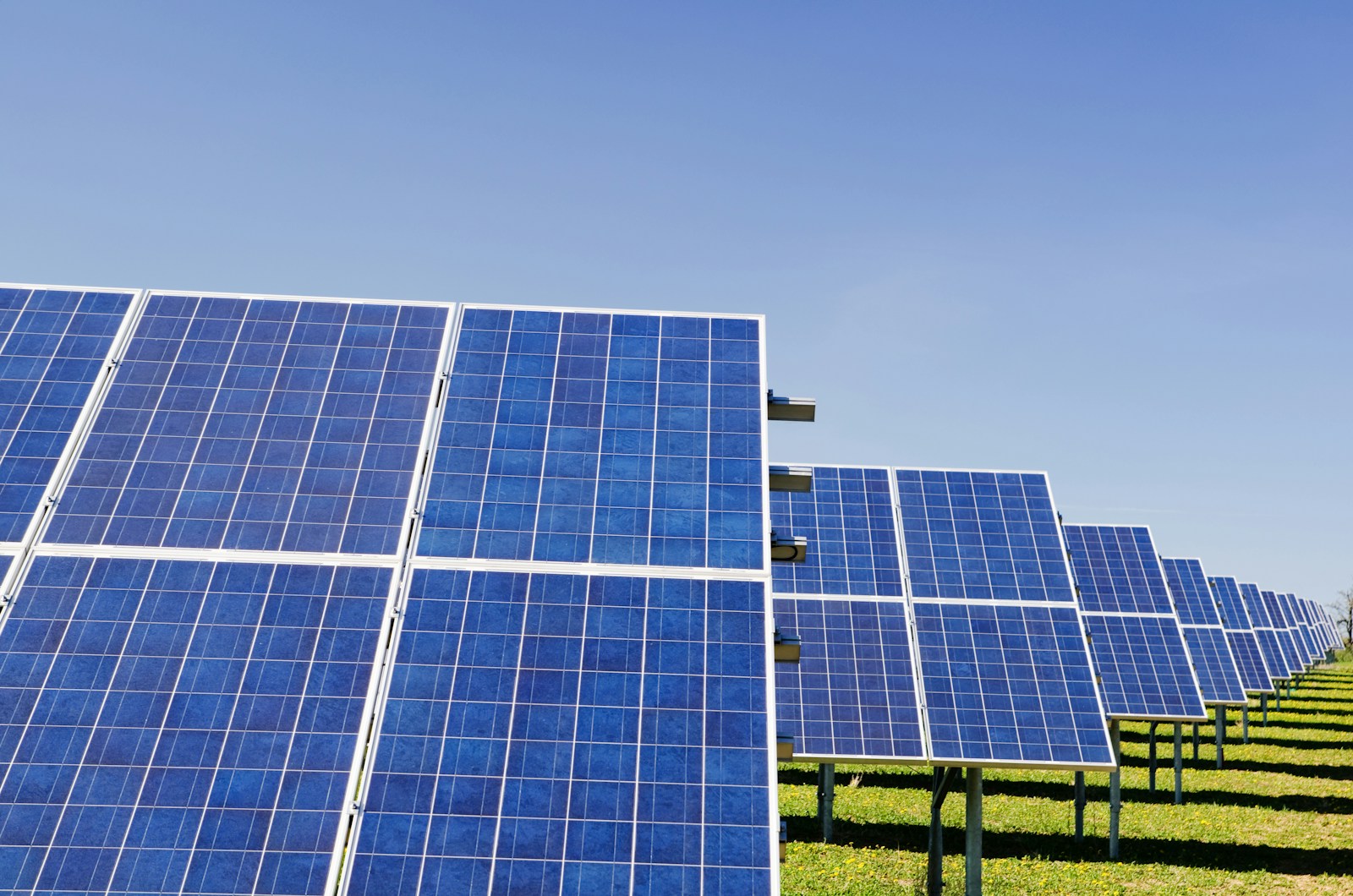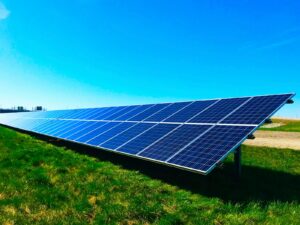Solar-powered tools are rewriting the guidelines on how we venture off the grid in this age of gizmos and devices.
These small miracles provide comfort and independence free from the hassle of conventional energy sources, much as a cozy blanket on a cold night.
Entering the wild meant forgoing the basics, but thanks to the brilliant and sunny side of technology we can now light our paths and keep our coolers cold.
Imagine this: the solar sector was gliding along at a steady 42% annual increase by 2020.
That is a solar-powered fiesta, not only fantastic news! Even where Wi-Fi is only a ghost story, people living in both cities as well as those lost souls in the wilderness can find consistent energy.
Solar devices keep you tuned in whether you’re building a comfortable remote cottage or camping under a starry sky and allow Mother Nature to shine in all her glory.
It makes sense that 77% of off-griders say their main inspiration is freedom—that dreams become sunny reality!
Let us discuss the pleasures of off-grid life.
Excellent solar technology goes hand in hand with independence, enabling us with everything from heating those cold evenings to refrigeration of leftovers.
Here is a list of how solar devices simplify life away from home:
- Lightweight and small, portable solar panels are the camping trip super hero since they generate power like a champion. Imagine a sunny day turning sunbeams into energy; it is most versatile.
- Essential for maintaining the supply flowing, solar water pumps can move thousands of liters a day to keep crops green and people happy while running on sunlight.
- By consuming sunlight rather than electricity, solar-powered refrigerators help to lower food waste by up to 25% and keep your food fresh and cool. See them as your personal solar chef.
- Maintaining your devices’ juiced-up condition is easy with solar chargers Like a reliable sidekick on an adventure, these portable friends guarantee your link to the outside world even in the wilderness.
The $10 billion market for portable solar panels is only the beginning as interest among off-grid enthusiasts increases.
Beyond the figures, though, is a real turn towards a better, greener way of life.
Every solar device signals a dedication to lowering our carbon footprint; a typical home solar panel system can over its lifetime eliminate almost 100 tons of carbon. Like having four elephants off your rear!
The statistics clearly show the appeal of off-grid life.
The growing need for solar devices alters our perspective on energy since it combines environmental consciousness with comfort.
Like finding an extra french fry at the bottom of the bag, solar power is more within reach with creative ideas blossoming and costs flying south by roughly 70% since 2010.
These devices are keys, not just tools as we turn toward a bright future.
keys opening a lifestyle full of comfort, independence, and a little environmental love.
Everyone can help to preserve our lovely planet for next generations in the continuing narrative of solar-powered living.
Thus, let’s raise our solar panels high; the road of resilience and freedom is waiting!
Rising Solar-Powered Devices for Off-Grid Living
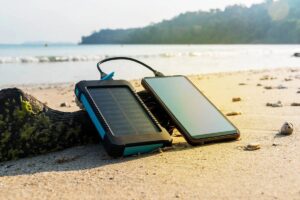
The rise of solar-powered devices has brought about hitherto unheard-of changes in how individuals live off-grid.
These devices enable people and households to break free from depending on conventional energy sources as a world is progressively turning towards sustainable energy.
Going off-grid meant forfeiting comfort and convenience historically, but solar technology has transformed that story.
Thanks to developments in solar technology, people can now live remotely and enjoy contemporary conveniences.
For many, solar-powered devices not only make off-grid living more pleasant but also more feasible.
Solar energy is being used by people living in rural areas or those camping far away to run their equipment, so guaranteeing their comfort and connectivity even in surrounded by nature.
This change represents a turning point in our perspective on energy consumption and independence, particularly for those looking for a life nearer the natural world.
Understanding Off-Grid Living
Those looking for sustainability and autonomy find off-grid living—a way of life free from public utilities—more and more appealing.
Usually involving creating one’s own electricity, controlling water supply needs, and maybe food growing, it also involves
Self-sufficiency is the main goal, which depending on the person’s circumstances and technology of choice can manifest itself in several ways.
Traits of off-grid living:
- Energy Independence: Steer clear of depending on power grids by using solar power among other renewable sources.
- Systems meant to guarantee access to water include well drilling or rainwater collecting.
- Emphasizing local food production, resource-conservation, and waste minimization, sustainable practices help to
Living off the grid presents major difficulties, but many people choose this way of life because of the benefits—freedom from monthly utilities, less environmental impact, and a closer relationship to nature.
According to an International Renewable Energy Agency poll, for example, roughly 77% of Americans living off-grid
cited as their main justification for their way of life being self-sufficiency.
Solar Technology’s Evolution
Over the past few decades, solar technology has developed dramatically, raising accessibility and efficiency.
Early on in their use, solar panels had rather poor efficiency and high manufacturing costs.
But advances in photovoltaic PV technology driven by creativity and growing demand have made solar devices both robust and reasonably priced.
The Solar Energy Industries Association reports that the solar sector experienced remarkable expansion, averaging 42% yearly between 2010 and 2020, so providing more efficient solar solutions for off-grid living.
Important Solar Technology Developments:
- Modern solar panels can turn over 20% of the sunlight into useable power.
- From little chargers to big house systems, the spectrum of solar products keeps growing.
- Better solar energy storage made possible by developments in battery technology helps to enable usage during non-s sunny hours.
Solar technology’s future seems bright.
Solar-powered devices should become increasingly important in allowing off-grid living as the world keeps looking for greener energy sources and works for sustainability.
Benefits of Solar Energy for Remote Residents
For those who live in far-off places, using solar technology has rather significant advantages.
Above all, using solar energy helps to lower reliance on fossil fuels, so improving the surroundings.
For those who live far from power plants, it provides a reasonable way to get energy without paying outrageous expenses.
Solar’s advantages for remote living:
- After their initial outlay, solar systems can drastically lower energy costs. Particularly in remote locations, households can save an average of $50–$200 monthly on utility bills by using solar energy, according a National Renewable Energy Laboratory analysis.
- In locations where conventional utility access can be erratic or nonexistent, solar power offers consistent energy. Even in the most remote areas, a well-designed solar system can satisfy daily energy consumption uninterrupted.
- Solar energy is a renewable resource, thus it has less effect on the environment than more conventional energy sources. With an average annual cut of 3.5 tons, solar energy can help to reduce household carbon footprints according to the U.S. Environmental Protection Agency.
Investing in solar solutions lets one live more self-sufficiently and fits modern ideas of environmental responsibility and sustainability.
Essential Solar Tools for Remote Living
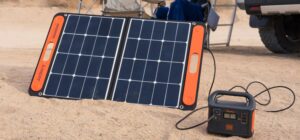
Changing to solar-powered devices can greatly affect the way people living off-grid live.
Modern devices offer useful answers for daily problems and especially target the needs of remote people.
From energy generation to pump water from wells, top quality solar devices have shown to be quite useful.
Portable Solar Panels: Travel Freedom
Recreational outdoor enthusiasts as well as those who lead a nomadic life now depend critically on portable solar panels.
These panels let consumers use solar energy anywhere, so providing flexibility and convenience.
In just a few minutes, a basic setup can transform sunlight into useable electricity.
Advantages of portable solar panels:
- Designed for simple transportation, these lightweight and compact solar panels weigh anything from a few pounds to several dozen.
- When camping or in a remote location, they can be used to charge batteries, run laptops, or even supply electricity for appliances.
- Most portable solar kits are user-friendly for people with limited technical knowledge since most of their components are plug-and-play ones.
The worldwide market for portable solar panels has seen notable expansion as of 2023; it is expected to reach $10 billion by 2026, so reflecting consumers’ growing interest in environmentally friendly devices.
Solar-Powered Generators: Infinite Energy
When it comes off-grid living, solar-powered generators completely change things.
Unlike conventional gasoline generators, solar generators offer a quiet, environmentally friendly substitute supporting many uses.
Solar-powered generators have certain characteristics:
- Ideal for remote sites, silent operation allows them to generate power free from the noise usual of fossil fuel generators.
- Running just on sunlight, solar generators let users create energy as long as they have access to the sun.
- Many solar generators feature several ports to charge small appliances, run other devices, and more.
A normal 300-watt generator can run a laptop for roughly 10 hours, a coffee maker for three hours, or a mini-fridge for six hours, so providing a significant supply of energy for daily needs without running down resources.
Solar Water Pumps: Water, the Fundamental Life Ingener
For everyone living off the grid, access to pure water is absolutely critical.
In far-off places, solar water pumps offer a sustainable answer for distribution and water source.
These solar-powered pumps run efficiently for irrigation, cattle, or household use as well.
Features of solar water pumps:
- Efficiency: Solar pumps are thought to move between 3,000 and 5,000 liters daily, a significant water flow.
- Sustainability: Pumping using solar energy lessens reliance on electric pumps that might not be found in off-grid environments.
- Comparatively to conventional pumps, solar pumps over time lower utility bill and maintenance related costs.
Adopting solar-powered water pumping systems could increase access to water by up to 30% in arid and semi-arid areas, so highlighting the transforming power of this technology according to the International Water Management Institute.
Daily Accessibility with Solar Devices
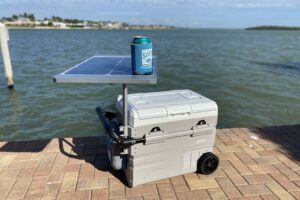
Including solar devices into everyday activities has given remote living fresh convenience.
These clever tools not only meet daily needs but also improve the whole quality of living by offering comfort and simplicity.
Freshness in the wilderness: solar refrigerators
For off-grid aficioners, solar refrigerators have become essential for maintaining food and medication.
These refrigerators eliminate the need for traditional electricity by using solar power to maintain contents cold.
Salient characteristics of solar refrigerators:
- Energy Efficiency: Compared to conventional models, solar refrigerators run rather little. This quality directly results in more food preservation and cost savings.
- Many models are made to be light-weight and portable, perfect for camping or usage in far-off homes.
- Low Maintenance: Solar refrigerators’ simple mechanics mean that, although being appliances, they demand little maintenance.
Usually running as little as 50 watts per hour, a standard solar refrigerator can efficiently keep temperatures around 40°F. In line with the U.S.
Households that depend on solar refrigerators report a reduction in food waste of up to 25%, which demonstrates their practicality in an off-grid environment. Department of Energy
Solar Lighting: Illuminate Your Nights
Modern living has always depended on illumination, thus solar lights have become a great substitute for both indoor and outdoor requirements.
Solar lights with their creative designs combine utility and beauty.
Types of Solar Lighting:
- Garden solar lights charge during the day and light paths and landscaping at night.
- Security lights provide enough brightness driven by solar energy to discourage nighttime hazards.
- Portable solar lanterns are perfect for camping and outdoor or indoor lighting.
Further confirming the advantages of switching to solar is data from Solar Energy International showing that using solar lights can cut conventional energy use by up to 90% in outdoor lighting situations.
Solar chargers: energy right at your fingers
Mobile solar chargers let consumers keep their gadgets running anywhere.
Whether camping, hiking, or just off-grid living, solar chargers have grown to be essential devices.
Features of Solar Chargers:
- They can charge cameras, tablets, and cellphones among other gadgets.
- Most solar chargers are light-weight, foldable devices that make carrying them simple.
- Many built-in batteries include built-in power banks that save energy for use on hazy days.
Users of solar energy over 100 times a year can charge their devices, according to a study by the National Renewable Energy Laboratory, so drastically lowering their energy consumption.
Improving Off-grid Home Comfort

Even in off-grid life, a good lifestyle depends on the comfort of home.
People can bring modern conveniences into their homes by using solar technologies, so ensuring their comfort and security.
Solar Heating Systems: Sunlight’s Warmth
For heat during colder months or on chilly evenings, solar heating systems offer a dependable fix.
These systems use sunlight to create heat for water or buildings, so providing warmth with a sustainable impact.
Categories of Solar Heating Systems:
- Perfect for household hot water needs, these systems can supply up to 80% of a house’s water heating demand from solar energy.
- By encouraging energy-efficient heating for homes, solar air heaters greatly help to lower dependency on fossil fuels.
In line with the U.S.
With payback times usually between six and twelve years, solar water heating can save households between $200 and $300 yearly. Department of Energy
Solar Cookers: Solar Energy Cooking
One unusual way to cook food without traditional fuels is with solar cookers.
These cookers enable good and energy-efficient meal preparation by using sunlight.
Several kinds of solar cookers:
- Insulated boxes called box cookers trap heat to reach roughly 350°F cooking temperatures.
- Parabolic cookers direct sunlight onto a point to produce high temperatures fit for boiling or fried cooking.
Apart from being environmentally friendly, solar cooking hydrates you.
Cooking with a solar oven can cut fuelwood consumption by 30%, according to studies by Solar Cookers International, so fostering better surroundings in areas depending on wood fires for cooking.
Control at Your Command: Smart Solar Home Systems
Smart solar systems enhance living by combining technology with renewable energy.
Systems for home automation can control appliances, control energy consumption, and guarantee highest energy efficiency.
Smart solar system components:
- Systems of Energy Management: Track consumption to maximize use.
- Smart appliances are those meant to fit perfectly with solar systems, so preserving efficiency.
The International Energy Agency reports that homes equipped with smart energy systems can save up to 20% of energy, so demonstrating how technology can harmonize with renewable resources for better living standards.
Solar Gadgets: Their Environmental Effect
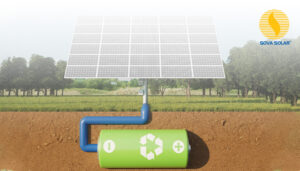
Turning to solar devices offers major environmental advantages, so highlighting the need of renewable energy in slow down of climate change.
Their acceptance directly affects ecosystems and communities since it conforms with world sustainability objectives.
Lowering Carbon Footprint with Solar Solutions
Reducing an individual’s carbon footprint relies much on solar devices.
Every watt of solar energy consumed reduces dependency on fossil fuels, so reducing greenhouse gas emissions.
Research on Carbon Reduction:
- Given the 25-year lifetime of the installation, the typical home solar panel system can cut carbon emissions by almost 100 tons.
According a Solar Foundation analysis, the United States
Right now, the solar sector helps to avoid over 2.5 million tons of carbon dioxide emissions yearly.
Changing to solar energy is among the most effective steps one can do to reduce their environmental impact and lead a more sustainable life.
Conserving Ecosystems via Ecological Living
Including solar technology into daily life helps not only with personal sustainability but also with local ecosystem protection.
Choosing renewable resources helps us to slow down the destruction of natural environments brought about by conventional energy production methods.
Advantages for ecosystems:
- Less emissions translate into less water and air pollution.
preservation of biodiversity by means of avoidance of habitat destruction linked to the production of fossils fuels.
Since they would live in better environments, switching to renewable energy sources—including solar—may help reduce the effects of climate change on over 90% of threatened species, according a study by the World Wildlife Fund.
The Value of Renewables Resources
Ensuring a sustainable future depends on renewable resources, which provide almost unlimited energy without draining the natural resources of the planet.
Using solar-powered devices shows a will to properly harness these resources.
Benefits of Solar Resources
- Sustainable Supply: In one hour the sun generates more energy than the earth consumes in whole year.
- Solar energy is practically everywhere, so extending the availability and equity in energy consumption.
The International Renewable Energy Agency claims that by 2030, switching to renewable energy could generate up to 24 million jobs globally, amply evidence of the ability of solar energy to shape a sustainable future.
Future Directions in Solar Devices for Off-Grid Living

As solar technology develops, ideas improve its uses in off-grid living.
Examining the future developments in solar devices helps one to understand how these instruments will enable remote lives.
Horizon Innovations: What to Expect
Among the innovations are better photovoltaic materials, smart grids, and batteries.
Future Events:
- By capturing sunlight on both sides, bifacial solar panels could possibly generate up to 25% more energy.
- Integration of smart meters with solar power guarantees that energy consumption matches availability by means of real-time energy monitoring.
Industry projections indicate that the solar market will keep changing as material sciences develop solar cell efficiency to exceed over 30%.
Reducing Costs: Making Solar Accessible
Although solar technology’s cost has been a major obstacle, trends suggest that as technology develops notable declines will continue.
Solar power is more reasonably priced than ever since the average cost per watt for solar installations has dropped—down almost 70% since 2010.
Important Cost Patterns:
- Many families can now afford residential solar since, as of 2023, its average cost has dropped to about $2.81 per watt.
Local government incentives and rebates help to promote adoption especially in rural areas ready for off-grid living.
People and families living in remote locations will progressively find themselves with suitable choices for an independent, off-grid lifestyle as solar devices become more affordable and easily available.
Community Solar Solutions: Individualized Sharing of Power
Community solar projects are becoming more and more important as more people choose off-grid living as a cooperative means to solve energy problems.
These projects pool resources and enable people to access solar energy collectively by means of shared solar resources, so enabling individuals to benefit from a group investment in solar energy.
Advantages of community solar
- Participants in a solar farm can own a share, so obtaining access to clean energy without having to make roof or equipment investments.
- Community solar helps low-income areas to profit from renewable energy, so effectively democratizing solar access.
- Reflecting the growing trend toward collective sustainability in energy access, a National
Renewable Energy Laboratory study shows that community solar could run almost 20 million homes by 2025.
Overcoming Obstacles in Remote Living Powered by Sunlight
For those living off the grid, solar technology still presents difficulties even if its many benefits.
Maximizing the advantages solar devices present depends on an awareness of and ability to remove these challenges.
Solving Energy Storage Problems
Making sure solar power is available as needed depends on efficient energy storage.
Although solar energy generation peaks during the day, energy consumption can often span daylight hours.
Variations in energy storage choices:
- Effective and long-lasting energy storage options are given by lithium-ion batteries.
- Future technologies meant for longer cycles and broad uses without rapidly degrading are flow batteries.
Driven by increasing solar energy installations and demand for more energy dependability, the energy storage market is expected to soar and reach $100 billion globally by 2025.
Value of Maintenance and Upkeep
Maximizing solar systems’ efficiency and lifetime depends on their being maintained.
Although these systems are low-maintenance overall, neglect can cause performance to suffer.
Maintenance Techniques:
- By means of regular cleaning, solar panels can increase output by up to 20%.
- Routine inspections for damage, wear, or system flaws will help solar technology last for more years.
Following basic maintenance guidelines helps users to maximize the returns on their solar investments, so preserving dependability and production.
Navigating Variations in Weather: From a Solar Viewpoint
The efficiency of solar systems can be much influenced by the temperature.
For remote residents, cloud cover, rain, and even snow can hinder the generation of solar energy, so posing special difficulties.
Techniques for Conquering Weather Obstacles:
- Combining solar with other energy sources helps to create hybrid solutions to lessen reliance on one energy source by itself.
- Smart energy management systems maximize use, so ensuring that even with reduced solar energy output, basic needs are satisfied.
Notwithstanding fluctuations, the National Renewable Energy Laboratory shows that solar systems can efficiently generate energy even on cloudy days by absorbing diffuse sunlight, so enabling people to remain powered through different weather conditions.
Successful off-grid life depends on using solar technologies and knowing their effects.
The junction of sustainability, technology, and lifestyle choices captures the modern independence embodied by a dedication to a better future.
Last Thoughts
Often marked by discovery and empowerment, the path into off-grid living is driven by solar-powered devices.
These developments have opened doors for people living far from autonomy and shown that energy independence can coexist with contemporary conveniences.
As we have seen, solar technology makes concrete the dream of convenience and sustainability rather than only a fantasy.
Studies of communities adopting solar solutions reveal higher levels of satisfaction and a closer relationship with their surroundings, so highlighting the great influence of switching to solar energy in enabling a happy living.
Furthermore, the great variety of solar-powered devices now on the market—from solar water pumps to portable panels—showcases how flexible solar technology is for different purposes.
Users of solar power are also helping a worldwide movement toward sustainability.
Actually, increasing numbers of studies show that homes using solar devices can drastically lower their carbon footprints.
Over 100 tons of carbon emissions can be avoided on average over the lifetime of a normal solar installation by switching to solar energy, so making a great step toward a better earth.
As the science behind solar technologies develops, it promises even more accessibility and efficiency in the next years.
Smarter and more consistent energy solutions are being made possible by developments in energy management systems and battery storage.
These devices are not only for the wealthy; they are becoming available to all as the cost of solar installations drops almost 70% since 2010.
That change is vital since it allows families and people who might have thought the way of life unachievable to have sustainable living.
Ultimately, for those hoping for life off the grid, entering the realm of solar-powered devices is a deliberate decision.
It stands for a dedication to personal freedom, environmental preservation, and self-sufficiency.
The statistics show a bright future: as more people make solar technology investments, we get closer to a society where everyone values clean energy.
Adopting this technology not only improves our own quality of life but also helps our communities to become resilient so that the sense of freedom grows under the sun.
The moment to embrace solar living is right now; it promises a sustainable and empowered way of life.
Usually asked questions are
Describe solar-powered devices.
Devices classified as solar-powered are those that use solar energy for a variety of purposes including generating electricity, lighting, and running appliances.
Perfect for off-grid living, they are meant to run apart from conventional energy sources.
For those off the grid, how might solar devices help?
Solar devices let people and households off the grid access modern conveniences without depending on traditional power sources.
They improve self-sufficiency, support sustainability, and help to lower energy costs.
Under what circumstances might solar panels be less effective?
Indeed, under cloud cover solar panels can still generate electricity.
They can create energy even under clouds since they absorb diffused sunlight.
Still, their efficiency could be less than on clear, sunny days.
Which kind of solar devices are absolutely necessary for remote life?
Portable solar panels, solar-powered generators, solar water pumps, solar refrigerators, and solar lights are main solar devices for remote living.
Every one of these tools fulfills a particular need, so improving the general comfort and self-sufficiency of off-grid living.
For off-grid living, what are solar systems’ costs?
The size, components, and installation method of solar systems will all affect their cost rather greatly.
Residential solar installations, on average costing roughly $2.81 per watt as of 2023, are becoming more and more accessible for those contemplating off-grid living.
How do you operate solar water pumps?
Solar water pumps run a pump moving water from one point to another using solar energy.
In remote locations, irrigation, cattle, and household water needs all depend on them since they are sustainable and efficient.
What benefits solar refrigerators offer?
Energy-efficient, portable, and with little maintenance solar refrigerators are.
Perfect for off-grid living, they preserve food and medication without using conventional electricity.
Can solar chargers charge my gadgets?
Exactly! Solar chargers are meant to power cameras, tablets, and cellphones among other things.
They give consumers the ease of maintaining important devices turned on even off the grid.
What upkeep do solar systems demand?
Although solar systems require little maintenance overall, routine inspections for damage and regular cleaning of solar panels are absolutely vital.
This maintenance increases equipment lifetime and helps to preserve efficiency.
What effects on the environment does going solar have?
Turning to solar energy greatly lowers a person’s carbon footprint.
Solar devices help to reduce greenhouse gas emissions and lessen dependency on fossil fuels, so promoting a better environment.

